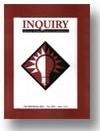Critical Thinking Styles and Forces of Influence by MGT 350 Our basic concept of critical thinking is, at root, simple. We could define it as the art of taking charge of your own mind. Its value is also at root simple: "if we can take charge of our own minds, we can take charge of our lives; we can improve them, bringing them under our "self-command" and direction (McCall and Kaplan, 1990)." Of course, this requires that we learn self-discipline and the art of self-examination. This involves becoming interested in how our minds work, how we can monitor, fine tune, and modify their operations for the better. It involves getting into the habit of reflectively examining our impulsive and accustomed ways of thinking and acting in every dimension of our lives and business. Many various "Forms of Thinking" affect the way we rationalize problems and situations. We could approach a problem by utilizing the forms such as in "a logical, scientific, persuasive, or creative fashion (University of Phoenix, 2000)."
The way we approach a problem or situation can be and is very important. In addition, all that we do, we do based on some motivations or reasons that are forces which influence our ways of thinking. However, we rarely examine our motivations to see if they make sense. We rarely scrutinize our reasons critically to see if they are rationally justified. "Some of the forces that influence are thinking can be gender, culture, ethnicity, religion, race, economic status, ethics, etc (University of Phoenix, 2000)." As consumers, for example, we sometimes buy things impulsively and uncritically, without stopping to determine whether we really need what we are inclined to buy, whether we can afford it, whether its good for our health, or whether the price is competitive. As parents, we often...



Very Interesting
I think that this essay is very interesting and that it is also a little over rated by members of this website, but it is very impressivly put together.
13 out of 13 people found this comment useful.